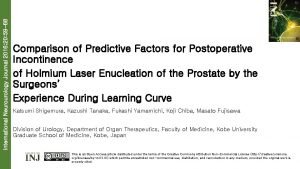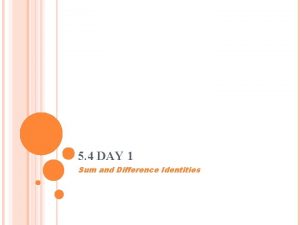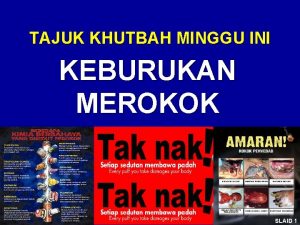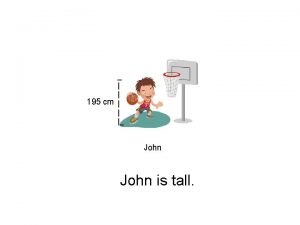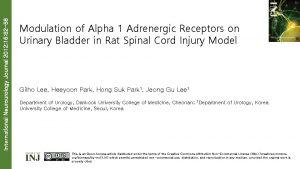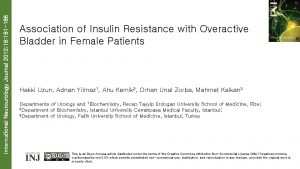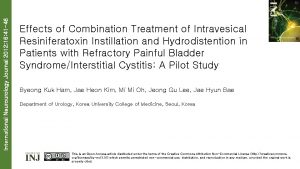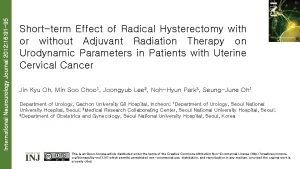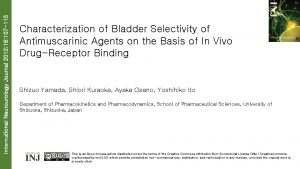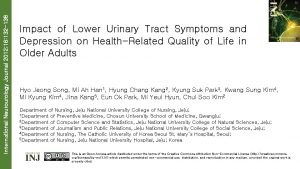International Neurourology Journal 2012 16 191 195 Chinese









- Slides: 9

International Neurourology Journal 2012; 16: 191 -195 Chinese Urologists’ Views of Practice Patterns in the Diagnosis and Treatment of Benign Prostatic Hyperplasia: A Nationwide Survey Nan Wu 1, 2, Jian Sun 1, Pulin Yu 3, Zhenqiu Sun 2 1 Shenzhen Nan. Shan Centre for Disease Control and Prevention, Shenzhen; 2 Department of Epidemiology and Statistics, School of Public health, Central South University, Changsha; 3 Beijing Institute of Geriatrics, Beijing Hospital, Ministry of Health, Beijing, China This is an Open Access article distributed under the terms of the Creative Commons Attribution Non-Commercial License (http: //creativecommons. org/licenses/by-nc/3. 0/) which permits unrestricted non-commercial use, distribution, and reproduction in any medium, provided the original work is properly cited.

International Neurourology Journal 2012; 16: 191 -195 INTRODUCTION • To assess the compliance of Chinese urologists with China’s benign prostatic hyperplasia (BPH) clinical practice guideline and to explore the diagnosis and therapy modalities for geriatric patients with BPH. MATERIALS AND METHODS • A cross-sectional survey study was carried out in 33 medical centers in 11 different cities in China. A total of 190 urologists participated in a survey to record their preferences for diagnostic tests and treatment options for BPH outpatients. Diagnostic test results as well as health care demands were collected by surveying 2, 027 outpatients aged 60 years and older.

International Neurourology Journal 2012; 16: 191 -195 RESULTS • The survey response rate was 97. 4%. The respondents generally used the diagnostic tests recommended in China’s BPH clinical practice guideline at varying rates. The used rates for medical history, ultrasonography, and urinalysis were above 90. 0%; that for uroflowmetry was 31. 2%. In addition, the rate of use of recommended tests was higher among doctors in the north than among those in the south. Combination therapy with αadrenoceptor antagonists and 5α-reductase inhibitors was the preferred treatment option for BPH, and was increasingly used with worsening lower urinary tract symptoms. Finasteride was the most prescribed medication (48. 0%), followed by tamsulosin (22. 7%). CONCLUSIONS • This study assessed the preferences of urologists in the diagnosis and treatment of BPH, which will serve as an important reference for updating and improving China’s current BPH clinical practice guideline.

International Neurourology Journal 2012; 16: 191 -195 Table 1. The proportion of benign prostatic hyperplasia (BPH) in male outpatients in China (n=31, 371)

International Neurourology Journal 2012; 16: 191 -195 Table 2. Objective parameters of the patients (n=2, 027)

International Neurourology Journal 2012; 16: 191 -195 Table 3. Doctors’ preferences for diagnostic tests for BPH in China (n=2, 027)

International Neurourology Journal 2012; 16: 191 -195 Table 4. Doctors’ preferences for treatment options of patients (n=2, 027) with benign prostatic hyperplasia in China

International Neurourology Journal 2012; 16: 191 -195 Fig. 1. Rate of use of drug therapies at different severity levels of symptoms. α-AR, α-adrenoceptor; 5α-RI, 5α-reductase inhibitor.

International Neurourology Journal 2012; 16: 191 -195 Table 2. Clinical data after 2 months of alfuzosin (10 mg) treatment
